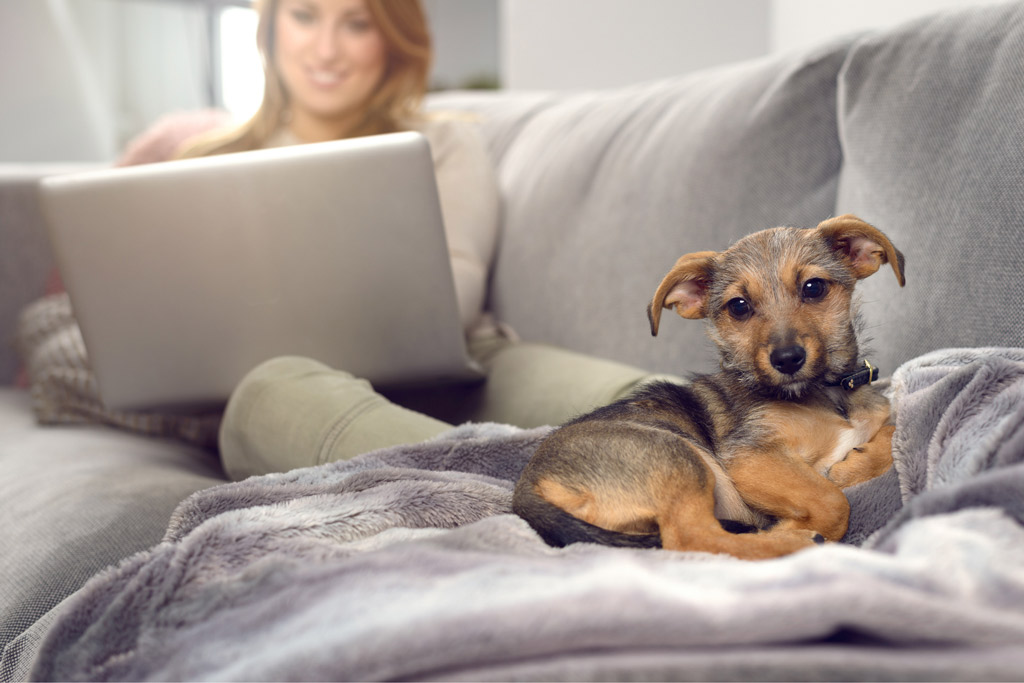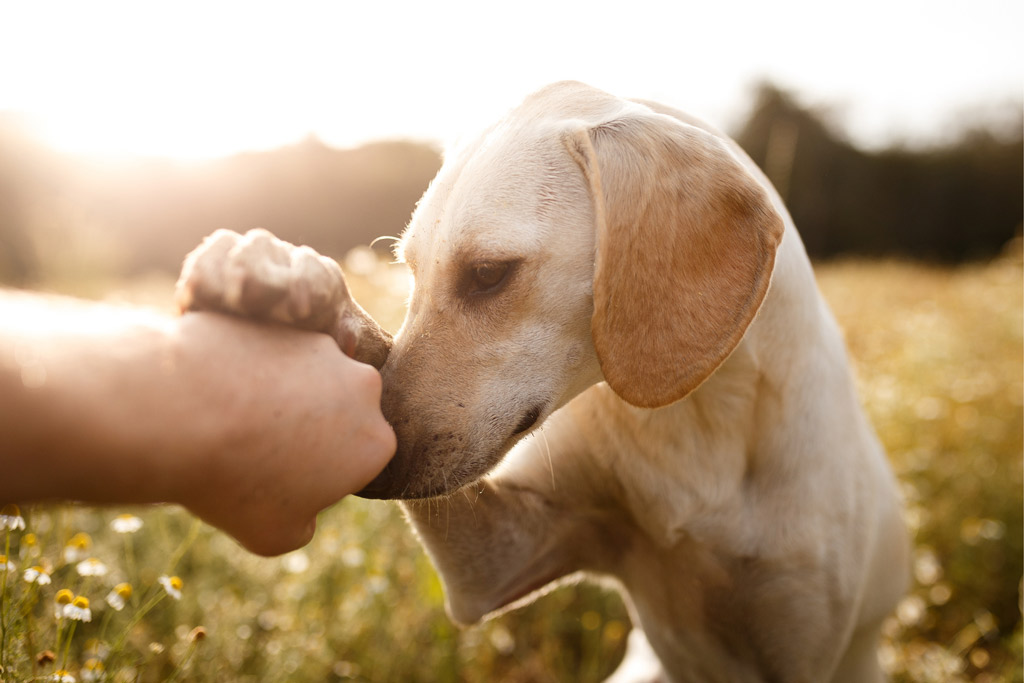
When you first have a dog, you realize how he starts following you a bit more every day until you are inseparable.
I was really fascinated by this and initially thought he only did this because he expected I had some food around, but that isn’t the case.
If you have ever wondered “why does my dog follows me everywhere I go?”, you might be in for a surprise.
All of these good things happen when he’s around you, which reinforce his decision to spend time by your side (including following you to the bathroom!).
But what’s under this profuse adoration that your dog has for you?
Here you’ll discover the benefits to this behaviour, and also when it can turn into separation anxiety.
Reasons For Your Dog Following You
“When dogs follow their owners, there can be several scientific explanations, depending on the dog and the individual situation.”
Mary Burch, PhD, a Certified Applied Animal Behaviorist and the American Kennel Club’s Canine Good Citizen Director.
Here are 5 reasons why your dog follows you around:
#1 – Source of Positive Reinforcement
You are his source of positive reinforcement.
One of the reasons why your dog follows you is because you are reinforcing this behaviour by giving him food, water, treats, walks and belly rubs.
The more positive things that happen to your dog when he’s around you, the more likely he is to want to be with you.
Your behaviours, whether you do them consciously or unconsciously, reinforce learning and influence the way your dog follows you. Dogs, like kids, know who they need to “butter up” in order to get what they want.
For example, when you put your shoes on and your dog is aware of this action, even though you don’t mean to take your dog out for a walk, he might get excited and is probably eager and ready to leave with you. And you can’t help but give in to the enthusiasm.
Or when you are eating or snacking, you find that your pooch is highly persistent in putting his nose and mouth into your plate, and you once again share your meal to stop the begging (even though he just ate).
These are all micro-commitments on our part that re-enforce your dog’s attachment and behaviour.
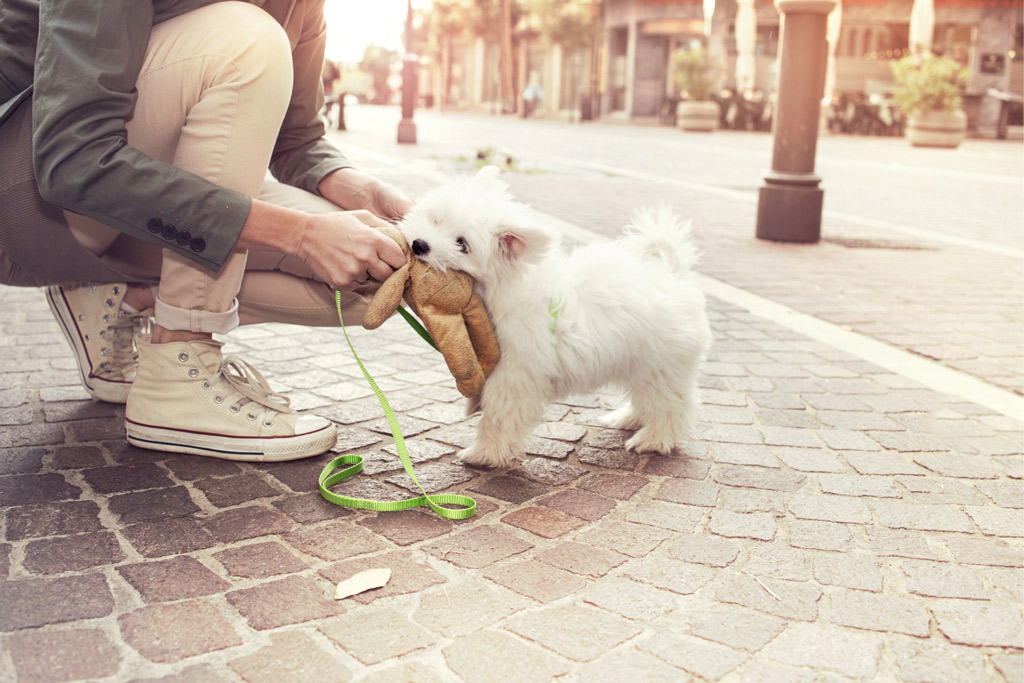
#2 – Born to Live in Groups and Breed Traits
It’s in his genes.
Especially if your dog is part of the working or herding groups, such as Border Collies or Australian Shepherds, this means he was bred to work alongside humans. That’s why it’s very natural for him to want to stay by your side.
“It’s a trait that’s prized and bred into their genetic history.”
Erin Kramer, a professional certified dog trainer.
And even if your dog isn’t a working or herding breed, dogs are still pack animals.
They don’t usually have a natural independent streak; they instead thrive in the company of others. This means that you’re part of the pack, which is why some dog training methods focus on establishing you as the “pack leader.”
Also, there’s the house patrol duty.
As you know from witnessing your dog’s reactions to strangers at the door, dogs place a high value on protecting their pack. So when he thinks that you are doing your part in patrolling the house, your dog naturally joins in.
#3 – Companionship or Sharing a Bond
Research shows the bond between a person and a dog is similar to the bond experienced between a child and his parents.
According to the research conducted by Biology Letters, dogs recognize both dog and human emotions. Dogs are not only masters at reading human faces and body postures but are also capable of understanding what the expression means, emotionally.
Your dog is also likely watching your actions closely for clues about the day.
“They’re watching our every move to see if we give them clues as to our intentions, or to catch us communicating with them. In this way they could anticipate that it’s time for a walk, or see that you are getting ready to leave, or perhaps that it’s dinnertime.”
Dr Oscar E. Chavez, adjunct faculty member at Cal Poly Pomona University.
Because of the understanding that your dog has of you, he bonds with you and enjoys the companionship he gets when he is with you, just as you enjoy his.
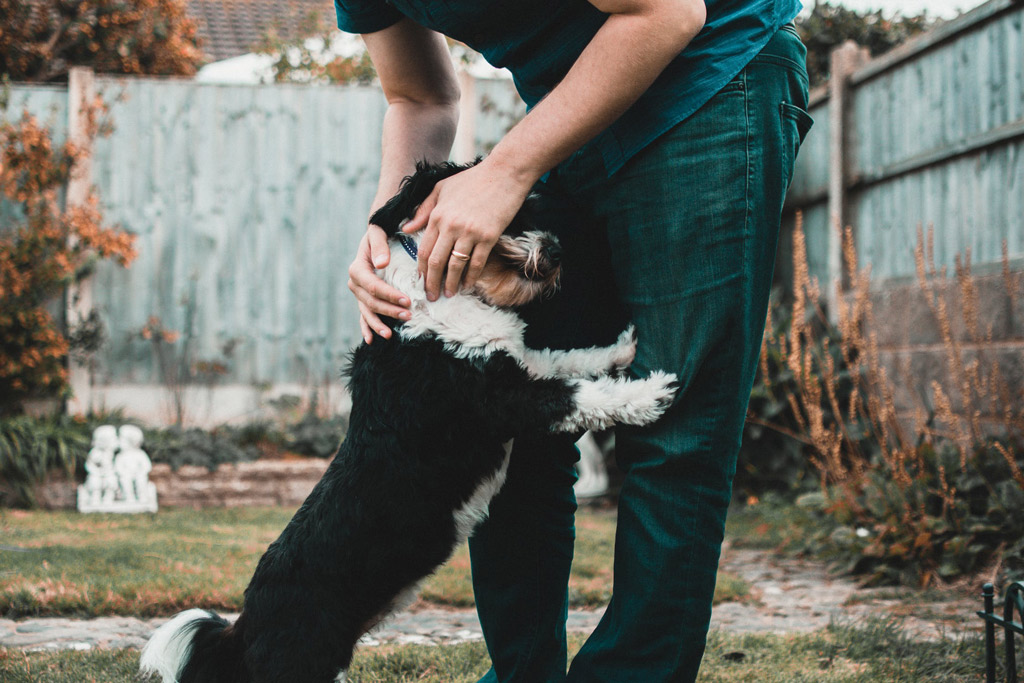
#4 – Imprinting on You
If you have had your dog since he was a puppy, it’s also possible that he imprinted on you i.e. identifying and connecting you as his parent.
“Puppies can imprint on people, as well. The imprinting period for puppies is between 3 and 12 weeks old.”
Mary Burch, PhD, a Certified Applied Animal Behaviorist and the American Kennel Club’s Canine Good Citizen Director.
For example, shepherds and farmers introduce their guardian dogs to their livestock whilst they are puppies, so they imprint on the flock.
However, your puppy at home may imprint on you when he’s between 3 and 12 weeks of age. As a result, he will view you as his mother or a person he can trust.
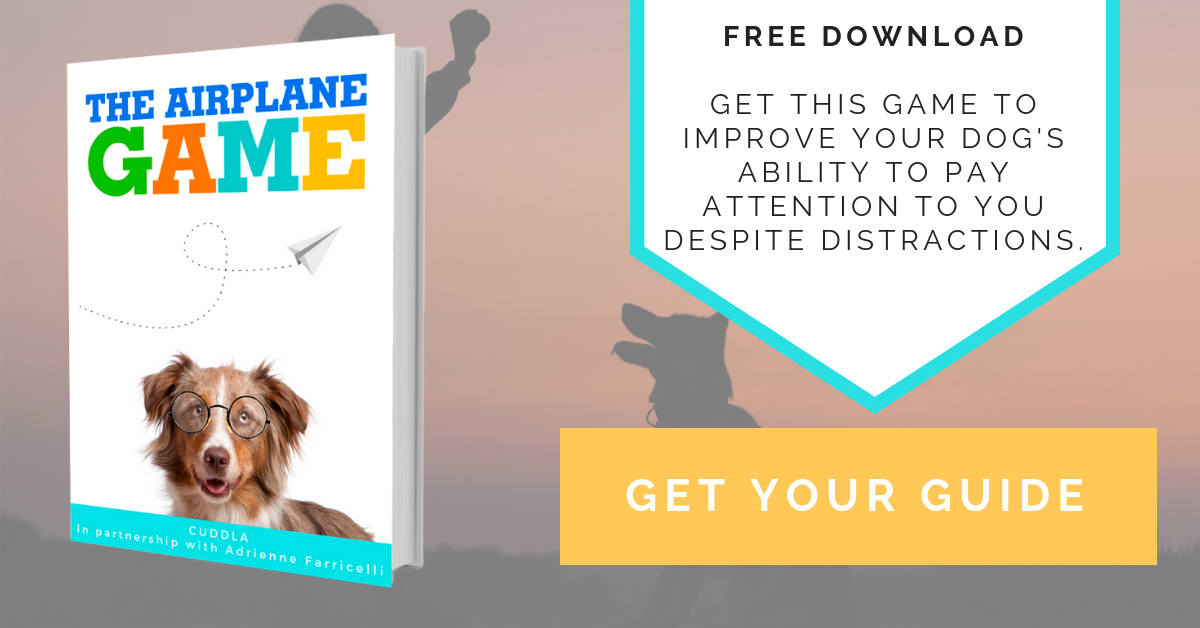
#5 – Curiosity Wins
You have very likely heard of this phrase: curiosity killed the cat – err – dog?
Like children (and humans in general), dogs are naturally very inquisitive animals.
Dogs watch and follow us around to try and figure out what we are doing and also because they don’t want to miss out on anything. Plus, they learn when they observe, smell and touch things around.
At times, they can be overly-curious to the point that you develop a nervous tick in your eye. Imagine coming home with your grocery bags, or getting them delivered, and when you are trying to unpack and your dog just has to have his nose right where you are working.
Also, dogs are drawn to movement. There are countless times when your dog will chase after a butterfly in the park or try to catch the ball that you are throwing far from them. They thrive in physical activities and they think if they follow you, they may get a ton of fun.
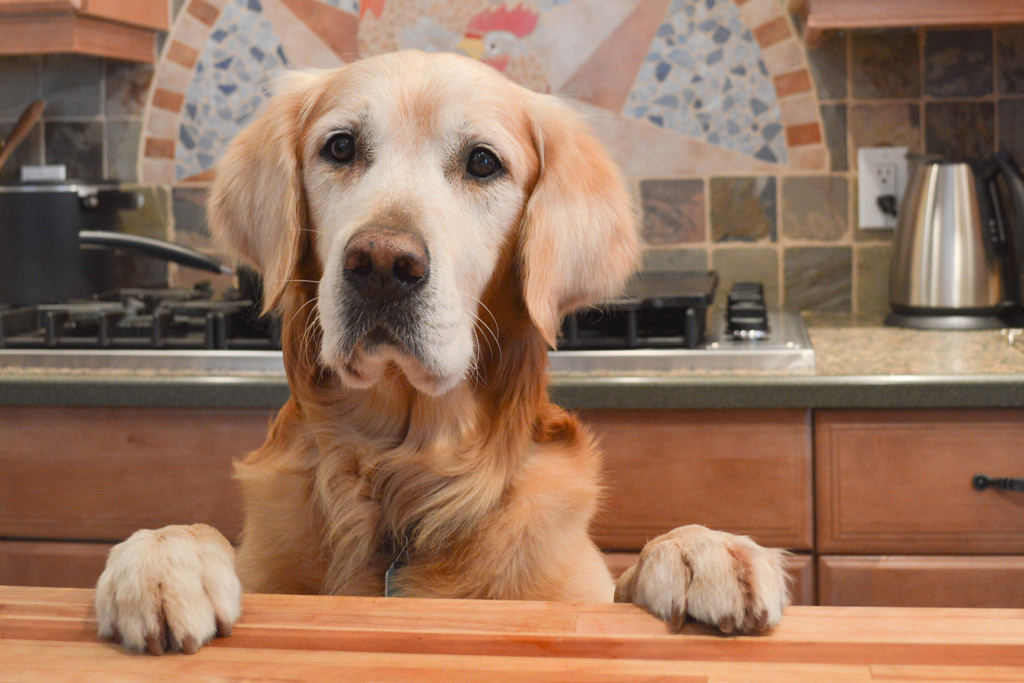
Benefits of Your Dog Following You
The great news is that all this following around has benefits for your dog and for you too! The human and dog bond works both ways.
How Does it Benefit Your Dog?
With all the time that your dog spends following you around, you are probably wondering… Is he getting anything good out of it? Yes, according to both Mary Burch and Dr Chavez, he is. And here’s a list:
- When your dog spends time with you, he is likely to come in contact with some positive reinforcement in the form of food rewards, petting, fun activities, and companionship.
- The time he spends studying your every move also helps him to gain a deeper knowledge of you, which can help him better interpret the meaning behind your actions. Remember that dogs understand human gestures, language, and tone.
- Also, when he’s watching every move, he is looking for clues as to our intentions. In this way, he can anticipate if it’s time for a walk or dinnertime.
How Does it Benefit You?
People also benefit from being close to a dog:
- Your loving dog prevents loneliness. Just the physical presence of your dog next to you is enough to provide a source of companionship and comfort.
- Your dog wanting to be near you makes you feel loved, and everyone can benefit from a healthy dose of unconditional love.
- When your dog wants to play and exercise, you benefit from the activity.
- Several studies have shown that even brief interactions with dogs reduce anxiety and improve mood. Your dog’s rhythmic breathing, soft fur and warm body contribute to this soothing effect.
- Your dog can also improve your health. He can lower blood pressure and triglyceride levels, which supports your heart health.
- He can even help detect diseases like cancer.
If you want to know more about the benefits of having a dog for you and the rest of your household, check out our Can my dog improve my wellbeing? Dog benefits for everyone blog post.
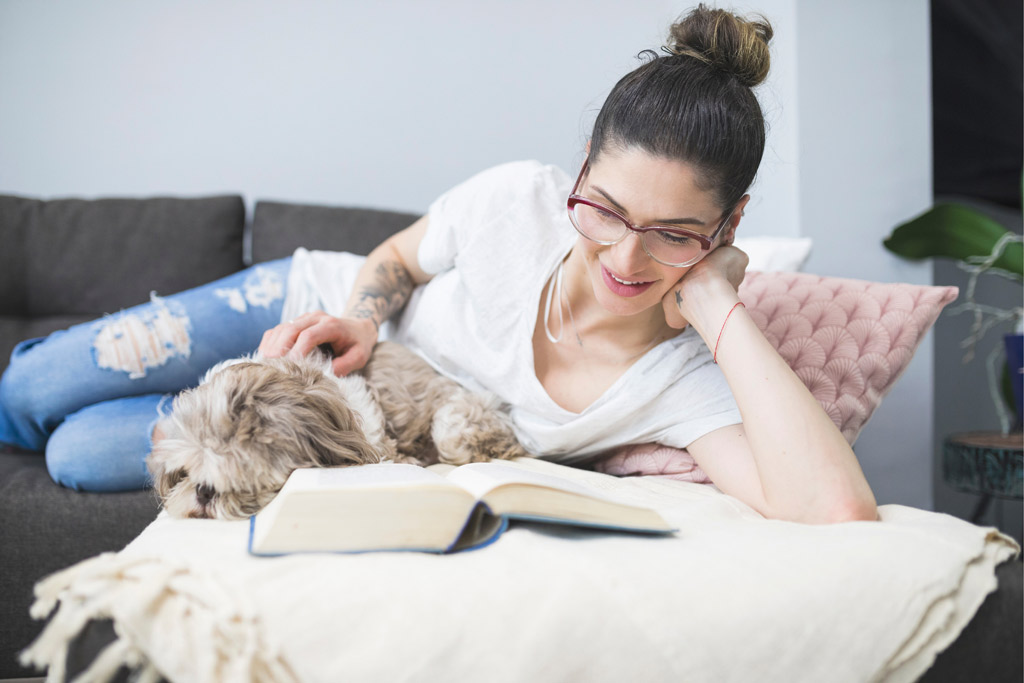
Identifying When Your Dog Following You is Too Much
Canine companions that exhibit “the following you” behaviour are often referred to as “Velcro dogs” because of their desire to stay attached to your side.
The big difference between being a velcro dog and separation anxiety is “the anxiety” itself. While a velcro dog is constantly glued to you, dogs with true separation anxiety become anxious and panic when they’re away from their owners.
The key is to have a dog that loves your attention and being close to you but is fine when you’re not around.
While a velcro is more susceptible to developing separation anxiety, it doesn’t automatically mean that he will. However, you should keep an eye to address the behaviour before it escalates. For example, if your dog sleeps in your bed, you might be creating dependency and reinforcing his need to be close to you at all times.
Also, bear in mind that a dog that bonds to a single person is more likely to develop separation anxiety. According to Dr Barrack, a dog’s life experience before entering your home can play a big part when it comes to being fixated on one person, especially for dogs who have been rescued.
“In these cases, the dog may be improperly socialized with people or might be overly bonded to one person. These dogs are at risk of developing social or separation anxiety, fear aggression, or other behavioural problems.”
Dr Oscar E. Chavez, adjunct faculty member at Cal Poly Pomona University.
Pay attention to your dog’s attention-seeking behaviour, because he will no doubt often beg for your attention, like:
- Put his paw on you for cuddles or playtime.
- Follow you so closely that sometimes you trip over him.
- Whine when you go out of reach, like the bathroom.
- Or attempt to interrupt whatever that you are doing – like reading this article!
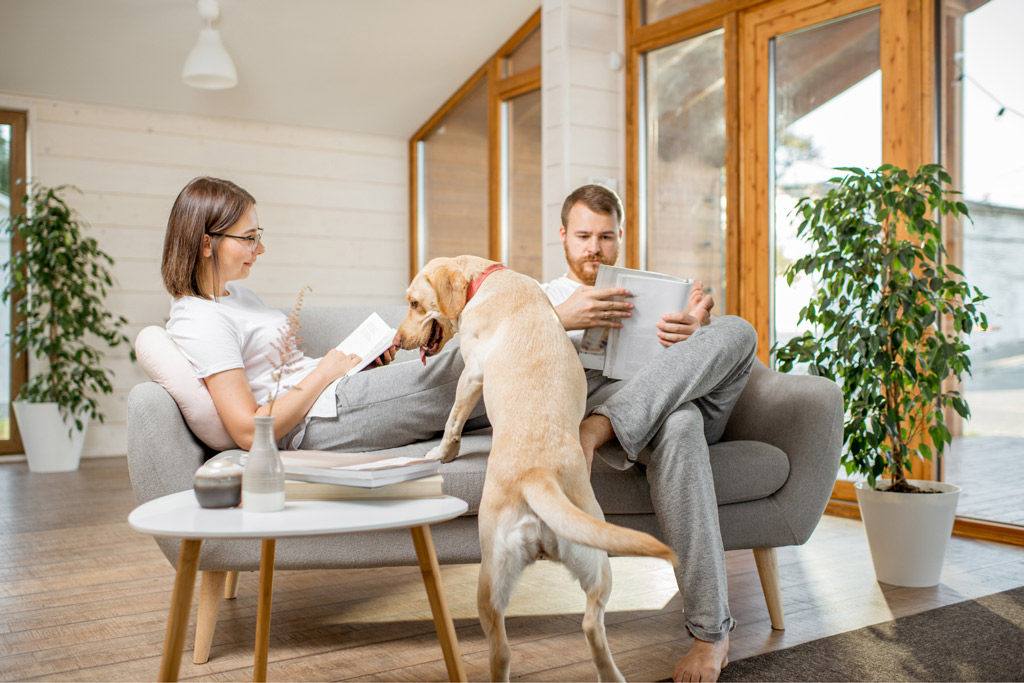
How to Prevent Your Dog From Following You Everywhere
Here are some steps that you can follow to make your pooch more independent:
- Train him on the stay command.
- Train him on the “go to your place” command, where the place could be his crate for example.
- Install baby gates, so he’s used to not having free range to follow you.
- Desensitize him to your movements by repeating the movement until your dog gets bored of following you.
- Don’t allow your dog to sleep with you since it only encourages dependency in this case.
- Play fetch games that will make your dog go away from you whilst playing.
In summary, always provide plenty of physical and mental stimulation by taking walks and having some dog play.
However, a training session will provide the biggest reward when addressing unwanted behaviour.
Check my favourite training method to implement short and fun training exercises in a feasible way.

What to Do When Your Dog Develops Separation Anxiety
One of the first steps is to be able to identify the signs. The most common signs of separation anxiety are:
- Destructive behaviour.
- Aggression.
- Depression.
- Urinating and/or defecating at home.
- Depression.
If you think your dog may be suffering from anxiety when you are not around, Mary Burch recommends the following:
- Leaving a dog interactive toy to help divert your dog’s attention from your absence.
- Having the radio, TV or a soothing playlist on when you are not at home.
- If those distractions don’t work, you could consult with a behavioural dog trainer.
For further information on how to deal with your dog’s anxiety, read more on our How to calm dog fears and anxiety blog post.
